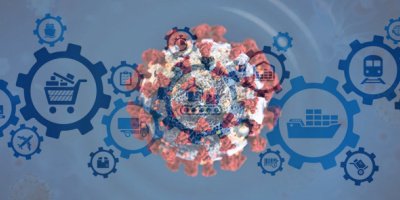Several months ago, a new word appeared in the lexicon that IBM executives read from when they talk with customers. That word--virtualization--is more than marketing hype. It's a family of technologies that are preparing IBM's servers and storage systems, including the iSeries, to assume new roles in the computing utilities of the future.
Virtualization is the practice of creating logical hardware devices that transcend the boundaries of a single physical device. The logical device may be a fractional part of a physical device, such as an iSeries logical partition (LPAR), or it may encompass hundreds of physical devices, such as a computing grid. No matter what form virtualization takes, it uses software to manage IT capacity at a higher level of abstraction than the physical devices that provide the capacity.
Virtualization is a great tool for solving many problems. On the iSeries, for instance, LPARs allow users to split a single server into test and production environments instead of buying separate servers. In the computing utilities of the near future, however, far more sophisticated forms of virtualization will be necessary. On any given day, utility providers will have to reconfigure their servers dozens or even hundreds of times to meet the constantly changing needs of their clients. This will require servers whose LPARs can dynamically reconfigure themselves to handle virtually any workload on any operating system.
It is precisely these types of requirements for which IBM is preparing its iSeries, pSeries, and zSeries servers. According to my IBM sources, the computer giant plans to support iSeries LPARs running the AIX operating system in an OS/400 release that it will probably ship in late 2003. It is also likely that this future release will support a significantly greater number of dynamically reconfigurable LPARs than the current limit of 32. At the least, IBM will probably support four LPARs per CPU across the entire iSeries product line. This would allow users to carve up a 32-way i890 into 128 LPARs.
It is not clear whether the advent of AIX on the iSeries next year will involve the complete merger of the pSeries and iSeries server families. Both servers get their LPAR capabilities from a software entity known as a hypervisor, which creates and manages all partitions. While the iSeries and pSeries hypervisors share some common code, they are also quite different. The iSeries hypervisor requires that OS/400 run in the primary LPAR and uses OS/400 functions to help manage the secondary LPARs. The pSeries hypervisor, by contrast, fulfills its functions with the help of the Hardware Management Console, an AIX-based utility. Besides relying on different software stacks, the two hypervisors differ in the number of partitions they can support and their dynamic reconfiguration capabilities. Before the iSeries and pSeries can fully merge, IBM must integrate the two hypervisors into a single systems utility. That effort could take more than a year to accomplish, pushing the iSeries-pSeries convergence out to 2004.
While the date of convergence may be unclear, IBM's plans for convergence are crystal clear. Moreover, those plans include the zSeries mainframe family. In 2005, IBM will likely announce the first zSeries servers that run on the POWER5 processor, a CPU under development that will also run on the iSeries and pSeries. The zSeries also uses a hypervisor to manage LPARs, and much of its code is common to the iSeries and pSeries hypervisors. Once IBM has all three server families running on the same processor, it intends to merge the zSeries hypervisor with those of the iSeries and pSeries to create what it calls its "universal" or "Mach 5" server. This server will offer hundreds of dynamically reconfigurable LPARs that can host almost any application as long as it runs on AIX, Linux, OS/400, OS390, or VM.
If you're part of a small or mid-sized company, you may be asking yourself by now, "What use would a company like mine have for such a server? It would be overkill for my needs." You're absolutely right...it would be. Indeed, only the largest companies could ever fully exploit the potential of such a Swiss Army Knife of servers. IBM is developing Mach 5 for such companies but, even more importantly, for the computing utilities of the future as well. As IBM sees it, those utilities will use Mach 5 to provide a smorgasbord of IT services to small and mid-market companies.
While few mid-market companies will ever need IBM's universal servers and their highly evolved virtualization technologies, they will need less sophisticated versions to achieve other goals. One of those goals--server consolidation--has become a hot topic among many mid-sized companies. I'll discuss this trend, as well as IBM's plans to use server consolidation to advance its own strategies, in next week's issue.
Lee Kroon is a Senior Industry Analyst for Andrews Consulting Group, a firm that helps mid-sized companies manage business transformation through technology. You can reach him at






















 More than ever, there is a demand for IT to deliver innovation. Your IBM i has been an essential part of your business operations for years. However, your organization may struggle to maintain the current system and implement new projects. The thousands of customers we've worked with and surveyed state that expectations regarding the digital footprint and vision of the company are not aligned with the current IT environment.
More than ever, there is a demand for IT to deliver innovation. Your IBM i has been an essential part of your business operations for years. However, your organization may struggle to maintain the current system and implement new projects. The thousands of customers we've worked with and surveyed state that expectations regarding the digital footprint and vision of the company are not aligned with the current IT environment. TRY the one package that solves all your document design and printing challenges on all your platforms. Produce bar code labels, electronic forms, ad hoc reports, and RFID tags – without programming! MarkMagic is the only document design and print solution that combines report writing, WYSIWYG label and forms design, and conditional printing in one integrated product. Make sure your data survives when catastrophe hits. Request your trial now! Request Now.
TRY the one package that solves all your document design and printing challenges on all your platforms. Produce bar code labels, electronic forms, ad hoc reports, and RFID tags – without programming! MarkMagic is the only document design and print solution that combines report writing, WYSIWYG label and forms design, and conditional printing in one integrated product. Make sure your data survives when catastrophe hits. Request your trial now! Request Now. Forms of ransomware has been around for over 30 years, and with more and more organizations suffering attacks each year, it continues to endure. What has made ransomware such a durable threat and what is the best way to combat it? In order to prevent ransomware, organizations must first understand how it works.
Forms of ransomware has been around for over 30 years, and with more and more organizations suffering attacks each year, it continues to endure. What has made ransomware such a durable threat and what is the best way to combat it? In order to prevent ransomware, organizations must first understand how it works. Disaster protection is vital to every business. Yet, it often consists of patched together procedures that are prone to error. From automatic backups to data encryption to media management, Robot automates the routine (yet often complex) tasks of iSeries backup and recovery, saving you time and money and making the process safer and more reliable. Automate your backups with the Robot Backup and Recovery Solution. Key features include:
Disaster protection is vital to every business. Yet, it often consists of patched together procedures that are prone to error. From automatic backups to data encryption to media management, Robot automates the routine (yet often complex) tasks of iSeries backup and recovery, saving you time and money and making the process safer and more reliable. Automate your backups with the Robot Backup and Recovery Solution. Key features include: Business users want new applications now. Market and regulatory pressures require faster application updates and delivery into production. Your IBM i developers may be approaching retirement, and you see no sure way to fill their positions with experienced developers. In addition, you may be caught between maintaining your existing applications and the uncertainty of moving to something new.
Business users want new applications now. Market and regulatory pressures require faster application updates and delivery into production. Your IBM i developers may be approaching retirement, and you see no sure way to fill their positions with experienced developers. In addition, you may be caught between maintaining your existing applications and the uncertainty of moving to something new. IT managers hoping to find new IBM i talent are discovering that the pool of experienced RPG programmers and operators or administrators with intimate knowledge of the operating system and the applications that run on it is small. This begs the question: How will you manage the platform that supports such a big part of your business? This guide offers strategies and software suggestions to help you plan IT staffing and resources and smooth the transition after your AS/400 talent retires. Read on to learn:
IT managers hoping to find new IBM i talent are discovering that the pool of experienced RPG programmers and operators or administrators with intimate knowledge of the operating system and the applications that run on it is small. This begs the question: How will you manage the platform that supports such a big part of your business? This guide offers strategies and software suggestions to help you plan IT staffing and resources and smooth the transition after your AS/400 talent retires. Read on to learn:
LATEST COMMENTS
MC Press Online